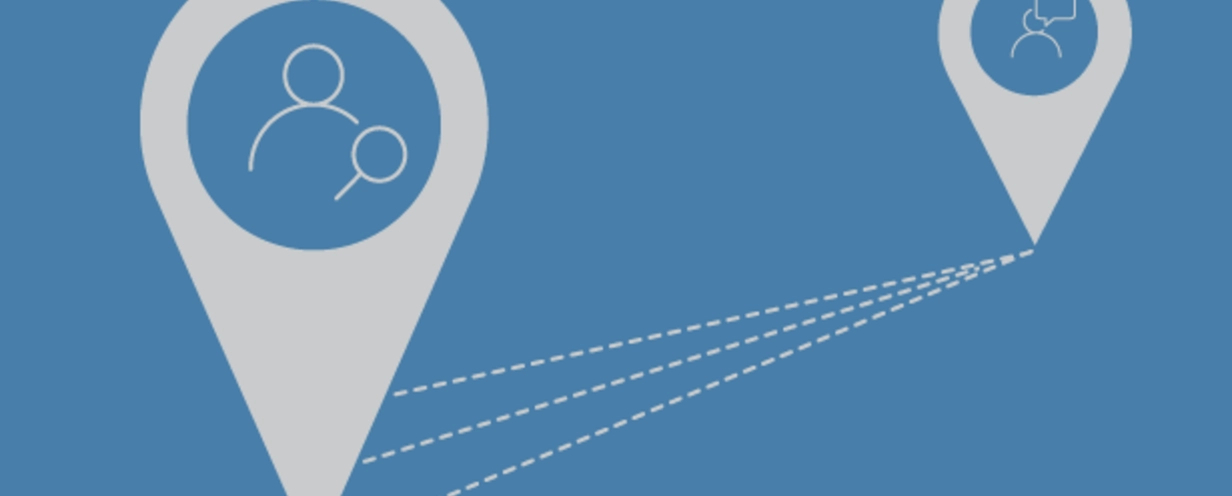
Bridging the Distance: 5 Tips for Remote, Moderated Usability Tests

Long-distance relationships are hard. Communication can be limited to texts and phone conversations. There can be a lot of guesswork in understanding the other person’s intent and message without visual cues. You sometimes wonder where the other person even is, based on the background noise of their environment. You miss out on the subtle hints of body language and facial expression that you would catch if you were physically present. Okay, so maybe comparing a long-distance, amorous relationship to a remote usability session is a stretch, but both situations tackle the peculiar challenges of participating in a conversation without being physically present. Here at UserTesting, remote studies (both moderated and unmoderated) are the bread and butter of what we do. Conducting moderated sessions remotely cuts out the cost of running a dedicated lab, opens up recruitment to test participants outside of your immediate geographic area, and is more convenient for participants who don’t have to factor in the logistics and timing of getting to the test location. We hope that you find the list of tips below from our experience will help you to take advantage of this fast and flexible user research method.
1. Explaining the remote process to participants
It can be intimidating to take part in a remote moderated session. Maneuvering the online meeting tools and interacting with a faceless voice can be daunting. Providing participants with ample instruction on how to join and what to expect in advance can assuage lingering concerns. Include in your moderating script a step-by-step breakdown of what they will see, what you will share with them, and what they will share with you, and inform them that the session will be recorded. If the participant will be showing their screen to you, ask them to close any material on their desktop that they don’t want shared with you before you start recording. This dialogue and openness about the motivations of the study will help build trust between the tester and moderator.
2. Checking the participant’s screen
Whether you, as the facilitator, are sharing your screen with the participant or vice versa, confirm what the participant is seeing on their screen before getting started. Some online meeting tools may show the moderator a different set of features than the test participant sees. This can lead to confusion during the test if you ask a question about an area of the screen they cannot see. Ask the participant to explain what they see on their screen. Make sure that the window that contains your testing material has been fully expanded. This will reassure you that any difficulties the participant encounters are part of the design of what you are testing, and not because part of their screen has been obscured or not fully expanded.
3. Paying attention to non-visual cues
One of the most difficult aspects of moderating a remote session is understanding your participant’s reactions and thoughts. Since you aren't sitting next to the participant, you need to make sure they continue to speak their thoughts aloud, whether they are confused, engaged, or upset. Ask, “What are you thinking right now?” or “Can you explain to me why you are doing that?” Keep an ear out for any sighs or mumblings and follow up with participants to understand what this signifies. Don’t discount any auditory indicators. Throughout your session, be vigilant about reminding a test participant to think aloud and elaborate on why they are taking certain actions.
4. Dealing with disturbances
Unlike in-person moderated sessions, which are conducted in a controlled environment, your participant will be in the comfort of their own home or in a place of their choosing, not yours. Although you've already explained the importance of setting aside a time and space that is private and quiet, interruptions can happen. You’ll have to roll with the punches when it does. Ask the participant if they need a moment to sort out any interruptions on their end. Reiterate that keeping interruptions to a minimum will let you finish the session on time. If other noisy disturbances occur, such as an ambulance passing by or a phone ringing, ask the participant to pause their comments until it passes so that they don’t have to repeat themselves.
5. Having a backup
Things will go wrong from time to time. This is true for both in-person as well as remote moderated sessions. During an in-person moderated session, as long as you are within hearing range of the participant, there’s not much that will get in the way of the participant being able to communicate directly with you. However, the online conferencing software and internet that gives us the ability to connect to participants in far flung places can also cut us off from them, which could possibly complicate your study. For your own peace of mind, and the integrity of the session, always make sure to have a recording backup. Quicktime on Macs offers an easy-to-use screen recording feature, while there are various other free tools for Windows that can also record your screen.
Final thoughts
There’s no need to go it alone. At UserTesting, we can handle the logistical preparation to set you up for success. Whether you would like to moderate yourself or have a member of our research team moderate for you, we can tailor your study to meet your objectives and deliver the recorded sessions in no time. We’ve come a long way in usability testing from the traditional two-way mirror testing labs. By keeping in mind these few tips, remote, moderated testing will expand the horizons of how often you test, who you can include, and what you can test.


